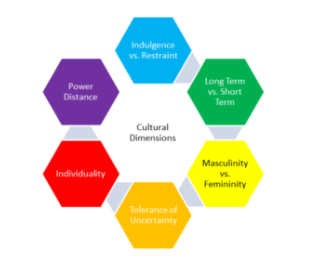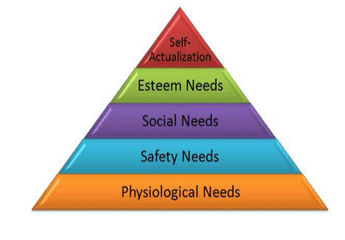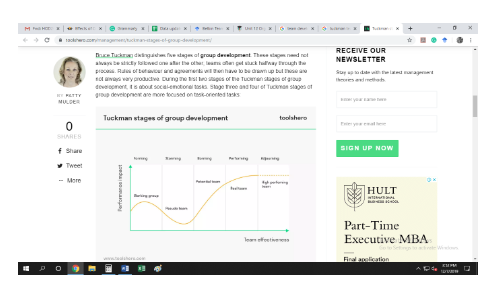Motivation Blueprint: Strategies that Drive Performance at Burberry
Assignment Part 1
Introduction
The assignment shall focus on the organizational motivation and various cultures of Burberry. Besides this, it also concentrates on the organization’s performance and behavior.
Discussion Forum
Company’s Background
Burberry is named as the most famous fashion house, which is situated in London, England. They deliver products such as trench coats, fashion accessories, cosmetics, sunglasses, ready to wear outerwear, and fragrances. They are delivering their services to different countries such as Finland, Slovakia, Austria, Japan, etc. This company has its name enlisted among the top 100 FTSE companies. Burberry has also been noticed to have placed in the 73rd position in the Interbrand’s Best Global Brands Report. Altogether, this company has 51 countries all over the world, making it a significant case study for those seeking fashion dissertation help. It delivers products that are quite comfortable and good. The consumers have preferred to use this company’s products to satisfy their needs (Burberry, 2019). They are famous for delivering pattern-based scarves and trench coats for its global customers. From the time of 1856, Burberry has been providing effective products and services to its customers, and this has made the company expand in the market in a prosperous manner.

Analysis of the Organization’s Culture, Politics, and Power
The company, Burberry, is having different cultures within the organization, and this has been impacting its workplace. The business is having cultures such as power, task and person cultures. Power culture states the power that has been provided to some of the people who are having a greater position in Burberry. On the other hand, the task culture is also taken into focus on behalf of the organization to maintain their team performance. They also concentrate on the company’s targets and problems. Through this, the employees of Burberry gain the scope to contribute their hard work towards accomplishing the given tasks. The person culture is also considered for making the employees realize their delegate roles of the employees. As an example, Hofstede’s cultural dimensions are also used by the organization to understand the issues involved within the workplace (Vidya Hattangadi, 2019). Through this, the company has been capable of understanding the power distance, indulgence, and uncertainty avoidance.

However, some of the politics are also noticed that are present within the workplace, and this has been impacting the growth of the company drastically. Organizational politics are related to the activities that are connected to some organizational and personal interests. These aspects affect the relationship among the employees, which in turn, influences the growth of Burberry. For example, politics is present in the organizational structure of Burberry, but it may also positively impact the employees too (Sage, 2015). Through politics, the organization gains the opportunity to focus on the ethical needs. The leaders will also be able to provide power to the members through this process. This will be efficacious for Burberry as the employees will deliver effective services by recognizing their power and abilities.
Theories of Motivation and Motivational Techniques
Various theories of motivation are used, and this has been creating a huge influence on the growth of the organizations. This has also been beneficial for achieving the goals of the organization like Burberry. Maslow’s need hierarchy model is one of the most significant ones through which the needs of the employees can be understood. With the support of the physiological needs, Burberry would be able to know the different needs of the man which may influence human behavior (Management Study Guide, 2019). Apart from this, the safety needs are also considered through which, the economic security and the physical dangers are observed within the employees in the organizational context of Burberry. The social needs are also considered with which the individual belongings and the social interaction among the workers are observed in Burberry.

The self-actualization and esteem needs are focused on where the employees could gather some self-confidence and knowledge about the work they are going to conduct. Other than this, the competence and independence are also observed that the employees follow during their process of delivering services. The help of the employees also maintains the capability and strength of Burberry. Thus, this model is said to be well effective for the company’s growth and sustainability (Expert Program Management, 2018). The two-factor theory is used for motivating the employees within Burberry. Through the motivation factors, the employees will be able to start working harder to achieve the goals of the organization. On the other hand, the hygiene factors are also concentrated where the actual job of the employees is followed and this, in turn, helps in creating good relationships with each other. The security issue is also concerned in addition to the company policies (Tahir and Yucel, 2019). For example, Burberry is using Maslow's hierarchy of needs for its betterment as through this, the company has been capable of understanding the problems and demands of the employees. Thus, this started influencing the performance of the company.

Some of the motivational techniques are also used for encouraging employees to do their work in a better manner. Burberry provides incentives when an employee works well in delivering better services on behalf of the organization.
Similarly, the trust issue is also encouraged within the organization for their betterment and growth (Hardcastle et al., 2017). The members are needed to be motivated in an individual manner rather than within the team. For example, Rewards are also used for motivating them, and this is usually depended on the feedback that they provide. These have been efficacious for the organization as the employees have started being motivated towards their work. This has also helped improve the performance of Burberry (Clark, 2017).
Conclusion
The assignment states about Burberry’s organizational culture and the influence of politics and power. Apart from this, it also explains the different motivational theories such as Maslow’s Hierarchy of Needs and Two-factor theory, besides the motivational techniques.
Reflection
From the discussion forum, I got to know that Burberry has a well-organized management structure. They have three different cultures, which are task, power and person cultures. I noticed that this has been influencing the growth of Burberry drastically. Along with this, Hofstede’s cultural dimensions are used for knowing the situation within the company’s structure. The motivational theories are also used for encouraging the people of the organization to do a better job. Maslow’s hierarchy of needs is used in this case, and it has also been beneficial for them as they were capable of motivating their employees. Through this, the needs and wants of the workers are also understood. Economic security and human behavior are also measured with the help of this method. The two-factor theory of motivation is also followed to manage hygienic and motivating factors. Motivational techniques are also used for the betterment of the employees, and Burberry also uses the various processes of rewards. I have noticed such aspects, and this has changed my perception of organizational culture and motivation.
Therefore, it can be understood that Burberry’s management tries their best to motivate their workers. This allows the company to take part in the process of influencing the behavior of the employees within their organization. It can be recommended that the company should provide some motivational activities for the employees. This shall help the organization to gain effective employees who will provide better work quality. The organizational behavior will also be improved with this. Thus, I would recommend that the company can understand the situation of the members and through the use of motivational techniques, their problems will be solved. I would also like to recommend that the impact of politics is needed to be minimized so that the employees can work without any hesitation. For example, I witnessed that many organizations have negative politics within their organization, and this has been influencing their working conditions. I have also gathered knowledge that the cultural differences were also another issue that has been impacting the growth of Burberry. The employees are also working according to the goals that are needed to be followed.
In this way, the workers within the organization will be able to adjust as per the organizational cultures. I want to state that the employees should respect each other’s culture and should try to use some of the innovative methods for creating a good communication bond among them. According to my perception, the cultures within the organization can be managed if effective steps are taken for this. Burberry needs to promote a culture within its workplace for this reason. Through this, innovative ideas will also be brought into use, which in turn, can improve the performance of the company, Burberry. Thus, by following these, Burberry will be able to gain a better position, and they will also be capable of overcoming the employees’ turnover issues, and more employees’ retention will be controlled.
Assignment Part 2
Introduction
The performance of a team directly affects the achievement of the desired goal. An individual must have the ability to work with different people in a group to improve the performance significantly. This self-reflection report intends to analyze the team members, dynamics, behavior and the role in a team. Furthermore, the different theories of team development will be analyzed, and a reflection of the different philosophies and concepts of organizational behavior will be presented to improve the productivity and performance of a business.
Analysis of Team Dynamics, Team Members’ Role and Behavior
Teamwork can be defined as the effort that is collaborative for achieving a goal that is set in common or efficiently completes a given task. During the teamwork, the dynamic of the team played a crucial role in positively achieving the goal. The mutual understanding of the team established behavior that was self-corrective and helped in establishing better decision making for achieving the most productive outcome for the group work (Schaubroeck et al., 2016). The dynamic of the team was supported by strong leadership quality to provide a structural direction and mitigate the issues of conflict. This structural dynamic of our team supported in the building of an efficient team.
The behavior of the team was another key aspect that is considered during teamwork. The behavior of the team is also a psychological factor within a team, which helps in achieving better performance (Dyer Jr, 2015). Valuing and showed respect to the other members enhanced the team member skills for solving the problem more efficiently and manage different troubles for the employees. The behavior of the people within the team showed helpfulness for achieving better quality for work and tackle the problems more efficiently. This form of behavior in our group helped in improving efficiency and created better teamwork.
Finally, different team members had a varied role during the activity to maintain equality and enrich the quality of development of the project. The roles of the members were determined to be action-oriented to achieve the goal of the organization and focus on achieving better performance. The role included sharper, implementer, finisher, resource investigator and specialist in the group (Venkataramani et al., 2016). The leader within the group acted as a facilitator, and the members of the team followed his decision to achieve a better outcome. Our team for the group activity comprised of five members in total and was efficient as each member carried their role with utmost responsibility.
Critical Analysis and Evaluation of the Relevance of Team Development Theories
The theory of the Belbin Team role states the different behavior of the team members and how it affects the success of the team. This theory develops the team cooperation by assigning roles to the team members. The different role helps in achieving a better result as a team. The role of the plant is to create new strategies and ideas. The resource examiner helps in better reporting ideas and develops different resources. On the other hand, the coordinator in a team improves the group activity for achieving better results (Lynch, Lynch, and Clemens, 2018). The sharper directs the team towards the team members towards the goal, and the monitor evaluates the different problems. Team workers support the member for improving their strength, and the completer finisher removes the mistakes within the team.

Another theory used for team development is the Tuckman Stages of Group Development, which sates the different stages of development within a group. They are to be followed consecutively to achieve better performance. At first, during forming, the team needs to be formed so that different team members achieve better results. The trust of the leader of the team and it moves to the next phase, known as storming, where the trust is being built among the members. Norming is the stage where the team starts to work efficiently, followed by the performing stage where the team members are aware of their responsibilities (Natvig and Stark, 2016). Finally, in the stage of adjourning, the team can be dissolved as the desired task was achieved. This model is a continuous process and helps in achieving better performance for the team.

The development of the team depends on the improvement of the soft and hard skills to achieve better growth within the team. The soft skills are mostly taught individually and are not specific needs. It helps in better evaluation of the environment under which the team is operating and improves their team performance.
On the other hand, hard skills are required for achieving better performance within a team (Ariratana, Sirisookslip, and Ngang, 2015). This is specified to the career path and the working condition under which the team is working. Improving the skills concerning the job role helps in achieving better performance for the team members.

A Reflection on the Concepts and Philosophies of Organizational Behavior and Evaluation of Their Relevance to Improving Business Performance and Productivity
The philosophy of path-goal theory assists in achieving the organizational goal as the leaders create styles for the different employees and the environment for work so that the respective organizational goal is achieved. It further improves the organizational behavior by the implementation of the style of being an achievement-oriented, directive path, participative behavior and supportive. This helps in achieving better satisfaction within the team. The activity greatly influences the behavior that is related to team activity as the barrier for effective behavior is mitigated rationally. The barrier rises due to poor feedback, inability to identify a solution and low support from the environment and situational resistance for the employees. These factors are identified and mitigated with the use of path-goal theory to enrich organizational behavior. Moreover, the social capital theory helps in achieving the goal of the organization with the use of a network of society and engages the employees to work efficiently through efficient social interactions. This assists in better organizational behavior and improving performance and profitability.
Conclusion
The following individual reflective report showed the different dynamics of a team, behavior and role of the team members in the group work. The team was efficient and was focused on the achievement of the goal. The different theories that were analyzed helped in understanding the different development of team cooperation. The philosophies of organizational behavior helped in achieving a better understanding of different productivity and performance improvement of an organization.
Continue your journey with our comprehensive guide to Motivating Employees.
References
Ariratana, W., Sirisookslip, S. and Ngang, T.K., 2015. Development of leadership soft skills among educational administrators. Procedia-Social and Behavioral Sciences, 186, pp.331-336.
Clark, M.D., 2017, July. Motivational Techniques for the Treatment Court Judge: Therapeutic Methods for Compressed Time Frames. In 23rd Annual Training Conference of the National Association of Drug Court Professionals, National Harbor, MD.
Dyer Jr, W.G., 2015. Team building. Wiley Encyclopedia of Management, pp.1-2.
Hardcastle, S.J., Fortier, M., Blake, N. and Hagger, M.S., 2017. Identifying content-based and relational techniques to change behaviour in motivational interviewing. Health Psychology Review, 11(1), pp.1-16.
Lynch, D.S., Lynch, M.J. and Clemens, C.M., 2018. Belbin Team Roles. The Handbook of Communication Training: A Best Practices Framework for Assessing and Developing Competence.
Natvig, D. and Stark, N.L., 2016. A project team analysis using Tuckman's model of small-group development. Journal of Nursing Education, 55(12), pp.675-681.
Sage, G.H., 2015. Globalizing sport: How organizations, corporations, media, and politics are changing sport. Routledge.
Schaubroeck, J., Carmeli, A., Bhatia, S. and Paz, E., 2016. Enabling team learning when members are prone to contentious communication: The role of team leader coaching. human relations, 69(8), pp.1709-1727.
Tahir, M. and Yucel, S., 2019. Motivational Techniques For Teaching: Prophetic Model. International Journal of Teaching and Education, 7(2), pp.70-85.
Venkataramani, V., Zhou, L., Wang, M., Liao, H. and Shi, J., 2016. Social networks and employee voice: The influence of team members’ and team leaders’ social network positions on employee voice. Organizational Behavior and Human Decision Processes, 132, pp.37-48.
- 24/7 Customer Support
- 100% Customer Satisfaction
- No Privacy Violation
- Quick Services
- Subject Experts



